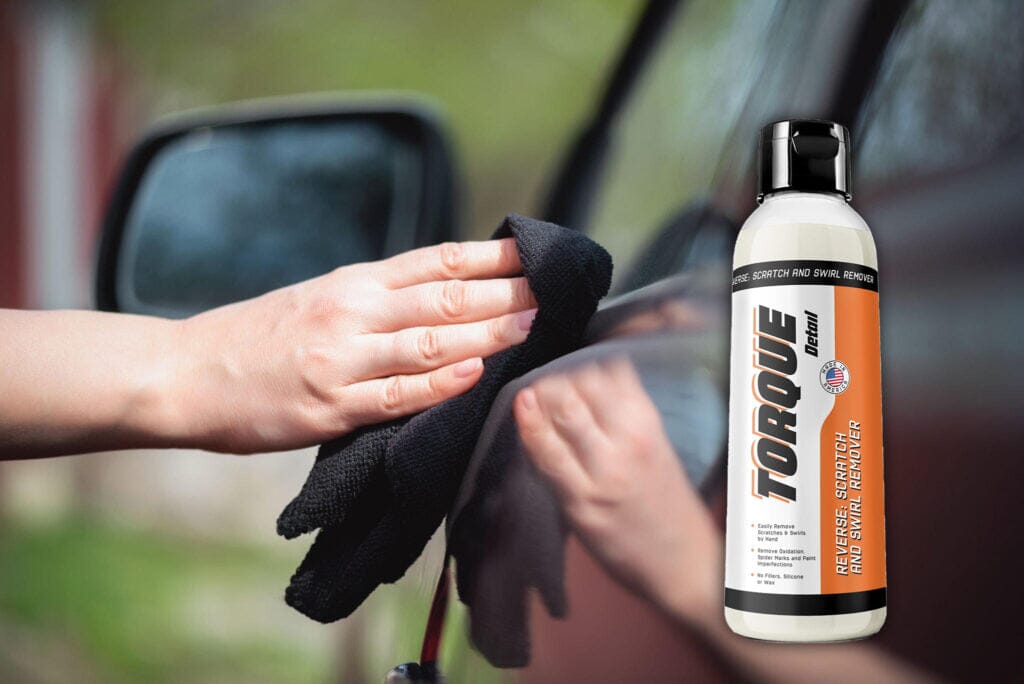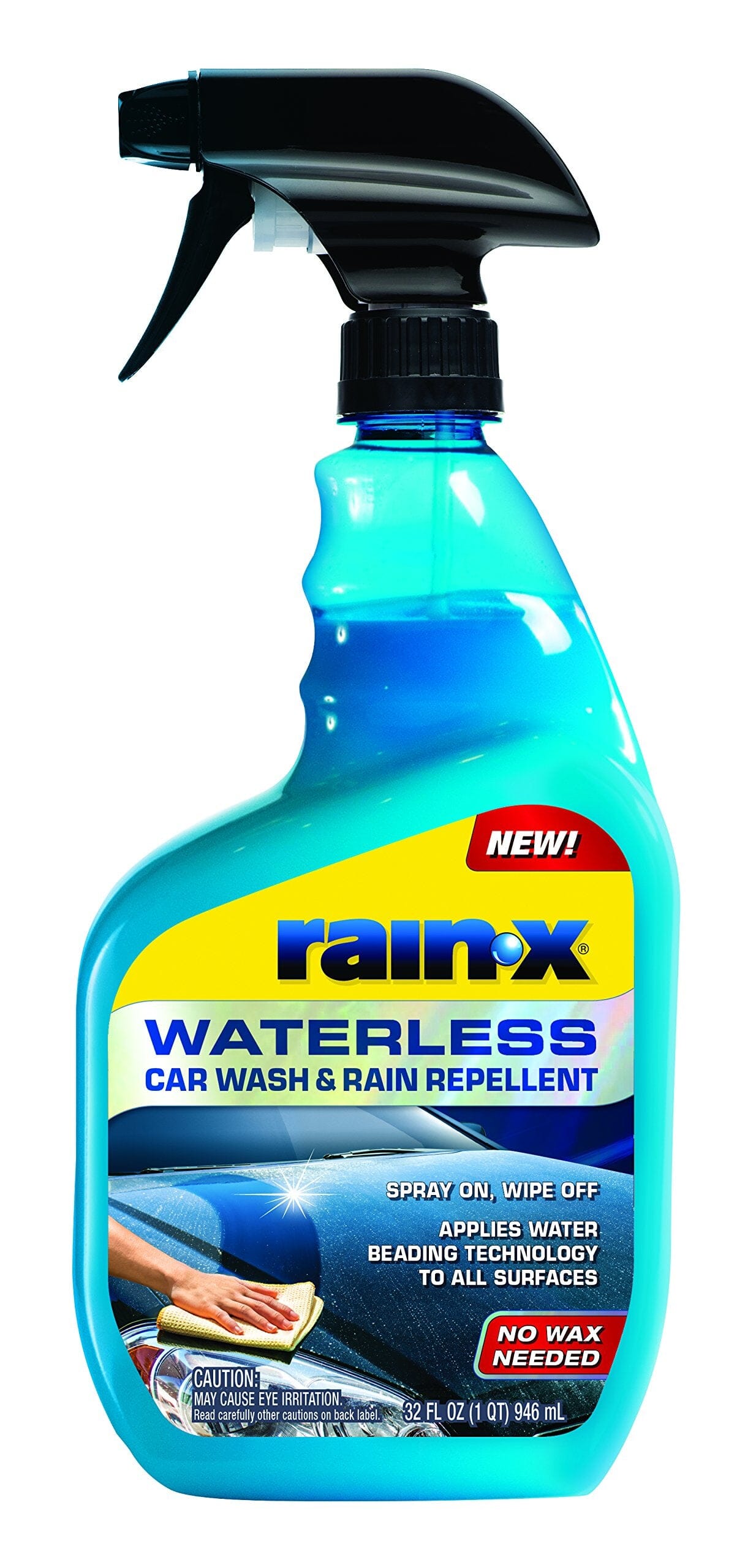Your car is a reflection of you. It’s the first thing people see when they meet you, and it’s important to keep it clean and polished. But what happens when your car starts to get dirty?
Dirt, brake dust, bug guts, and other contaminants can get stuck in the paint, and over time these will start to damage the finish. This is why it’s important to decontaminate your car regularly. This article will teach you how to decontaminate your vehicle using Torque Detail products.
★★★★★
Over 300 glowing reviews!
Your vehicle’s surface is filled with contaminants. Some of these may be visible, such bug guts, bird droppings, water spots, and tree spots. And some contaminants, such as iron deposits, brake dust, and overspray may not be visible to the naked eye.
What is Decontamination?

Decontamination is the process of removing contaminants from your car’s paint. These contaminants can come in many forms, but they all have one thing in common – they can damage your paint if left unchecked. By decontaminating your car regularly, you can remove these contaminants before they can do any damage.
Why is Decontamination Important?
Decontamination is important because it helps to preserve the finish of your car. However, over time, contaminants can etch into the paint, causing permanent damage. Removing these contaminants before they have a chance to do any harm will keep your car looking new for years to come.
How Does the Paint Become Contaminated?
There are many ways that the paint on your car can become contaminated. Here are some of the most common:
- Dirt and dust can settle on your car’s paint, and over time they will start to etch into the finish.
- Brake pads contain metal or iron particles that can be abrasive to your paint. When you brake, these particles are thrown onto your car’s paint, and over time they will start to damage the finish.
- Bug guts contain enzymes that can eat away at your paint. Unfortunately, when bugs hit your car, their guts are left behind, and over time, these will damage the finish.
- Tar and asphalt can stick to your car’s paint; over time, they will also damage the finish.
How To Test For Paint Contamination
Touch is the easiest way to determine if your car’s paint is contaminated. After you wash your vehicle, glide your fingers over the still-wet panels. Good condition paint should feel completely smooth–like a sheet of glass.
If you cannot feel the contaminants very well, try putting your hand in a sandwich bag first to help amplify the feeling. If your paint finish feels rough or gritty, then your paint contains bonded contaminants that should be removed.
What are the Types of Decontamination?
There are two types of decontamination: physical and chemical.

Physical Decontamination
Physical decontamination is the process of removing contaminants from your paint using a physical object, such as a clay bar. This decontamination is best for removing bonded contaminants, such as tar, brake and rail dust.

Chemical Decontamination
Chemical decontamination is the process of removing contaminants from your paint using a chemical solution. This decontamination is best for eliminating etched-in contaminants, such as mineral deposits, tree saps and bird droppings.
How To Decontaminate Your Car
Now that you know what decontamination is and why it’s important, it’s time to learn how to do it. This section will teach you everything you need to know about decontaminating your car.
What You Will Need
★★★★★
Over 300 glowing reviews!
Your vehicle’s surface is filled with contaminants. Some of these may be visible, such bug guts, bird droppings, water spots, and tree spots. And some contaminants, such as iron deposits, brake dust, and overspray may not be visible to the naked eye.
Before you start the decontamination process, there are a few things you will need:
- Full Decon Kit (GREAT VALUE! Includes wash mitt, clay block, clay lube, and our powerful decontamination soap)
- High quality microfiber towels – optional but recommended and useful
Step One: Wash Your Car
The first step in the decontamination process is to wash your car. This will remove any loose contaminants from the surface of your paint. Be sure to use a microfiber wash mitt and a decontamination car soap, such as Torque Detail Decon Soap. Ensure you wash the entire car, including the wheels, to remove all contaminants from the surface.
For a deep guide on safe car washing technique, check out our two bucket car wash tutorial.
Step Two: Dry Your Car
After you have washed your car, it is important to dry it completely. Use a clean microfiber towel to dry your car’s paint, and pay special attention to any areas prone to water spots.
Step Three: Inspect Your Car’s Paint
Now that your car is clean and dry, it’s time to inspect the paint for any bonded contaminants. These are usually found where bugs hit your vehicle or where tar and asphalt build-up. If you find any bonded contaminants, move on to step four.
Step Four: Decontaminate Your Car’s Paint
Now that you have identified the areas where contaminants are bonded to your car’s paint, it’s time to decontaminate them. There are two ways to do this: with a clay bar or with a chemical solution.
If you use a clay bar / clay block, spray the area with clay lube. Then, gently rub the clay bar over the paint’s surface until the contaminants are removed. Be sure to use a light touch — if you press too hard, you could damage the paintwork.
If you use a chemical solution, start spraying the area with the solution. Then, let it sit for a few minutes to break down the contaminants. After a few minutes, use a clean microfiber towel to wipe away the solution and the contaminants.
Step Five: Shine and Protect Your Car
★★★★★
High Rated Reviews from 150+ Customers
After a simple spray and wipe down using a microfiber towel, your car’s paint job will be protected for up to an entire year. Your car’s top coat impenetrable to any chemical, liquid, or environmental contaminant there is. In a matter of minutes!
After decontaminating your car’s paint, it is important to protect it with a fresh coat of wax. This will help keep contaminants from bonding to the paint in the future. Be sure to use quality car wax, such as our new product Torque Detail Graphene Burst: the coating that utilizes graphene (a material 100x stronger than steel). Apply the coating according to the manufacturer’s instructions, and then buff it off with a clean microfiber towel.
How to Keep Your Car Free from Contaminants
Now that you know how to decontaminate your car, it’s time to learn how to keep it clean. Here are a few tips:
- Wash your car regularly. The best way to prevent contaminants from bonding to your paint is to wash it regularly. Be sure to use a decontamination car soap, such as Torque Detail Decon Soap.
- Dry your car thoroughly. After you wash your car, be sure to dry it completely. Use a clean microfiber towel to dry the paint, and pay special attention to any areas prone to water spots.
- Inspect your paint regularly. Inspect your car’s paint regularly for any bonded contaminants. If you find any, decontaminate them as soon as possible.
- Apply a fresh coat of wax. After decontaminating your car’s paint, it is important to protect it with a fresh coat of wax. This will help keep contaminants from bonding to the paint in the future. Apply the wax according to the manufacturer’s instructions, and then buff it off with a clean microfiber towel.
FAQs
How Often Should I Decontaminate My Car?
The frequency with which you decontaminate your car will depend on how often it is exposed to contaminants. For example, if you live in a dusty area or drive on dirt roads frequently, you may need to decontaminate your car more often. In general, most people decontaminate their car’s paint every few months.
Can I Use a Regular Car Soap to Decontaminate My Car?
No, you should not use regular car soap to decontaminate your car. Regular car soaps are not designed to remove bonded contaminants. Instead, use a decontamination car soap, such as Torque Detail Decon Soap.
What’s the Best Way to Dry My Car?
The best way to dry your car is with a clean microfiber towel. Be sure to pay special attention to any areas that are prone to water spots.
Will I Need to Repaint My Car if the Contamination is Bad?
In most cases, you will not need to repaint your car if the contamination is bad. However, in some cases, you may damage the paint beyond repair, and you will need to repaint the car. If you are not sure, it is best to consult a professional.
How Does a Clay Bar Work?
A clay bar works by removing bonded contaminants from your car’s paint. The clay bar can remove these contaminants because it is very smooth. When you rub the clay bar over the paint, the contaminants are attracted to the clay and are removed from the paint.
How Does a Chemical Solution Work?
A chemical solution works by breaking down the bonded contaminants. The chemicals in the solution break down the contaminants, making them easier to remove. After a few minutes, use a clean microfiber towel to wipe away the solution and the contaminants.
How Does Waxing My Car Help?
Waxing your car helps to protect the surface of the paint from future contamination. The wax forms a barrier between the paint and the contaminants, making it more difficult for them to bond to the paint.
What’s the Best Way to Prevent Contaminants from Bonding to My Paint?
The best way to prevent contaminants from bonding to your paint is to wash it regularly. Be sure to use a decontamination car soap, such as Torque Detail Decon Soap. You should also dry your car thoroughly after washing it and apply a fresh coat of wax to the paint.
How Can I Tell if My Paint is Contaminated?
One way to tell if your paint is contaminated is to look for water spots. If you see water spots on your car’s paint, the paint is likely contaminated. Another way to tell if your paint is contaminated is to feel the paint’s surface. If the surface feels rough, it is likely that the paint is contaminated. Finally, if you see any stains on your car’s paint, then the paint is also likely contaminated. If you are not sure, it is best to consult a professional.
Will a Clay Bar Damage My Car?
No, a clay bar will not damage your car. In fact, it is one of the safest and most effective ways to remove contaminants from your car’s paint. However, if you use too much pressure or if you move the clay bar too quickly, you may damage the paint. Therefore, it is important to follow the manufacturer’s instructions carefully.
What’s the Difference Between Decontamination and Polishing?
Decontamination is the process of removing bonded contaminants from your car’s paint. Polishing is the process of removing scratches and swirl marks from your car’s paint. Both processes are important in maintaining the beauty of your car’s paint. However, decontamination is the first step in the process and should be done before polishing.
What’s the Difference Between Decontamination and Washing?
Decontamination is the process of removing bonded contaminants or impurities from your car’s paint, while washing is the process of removing dirt and grime from your car’s paint. Both processes are important in maintaining the beauty of your car’s clear coat. However, decontamination is the first step in the process and should be done before washing
★★★★★
Over 300 glowing reviews!
Your vehicle’s surface is filled with contaminants. Some of these may be visible, such bug guts, bird droppings, water spots, and tree spots. And some contaminants, such as iron deposits, brake dust, and overspray may not be visible to the naked eye.
Final Thoughts
Decontaminating your car is important in maintaining the beauty of your car’s paint. You can complete the process at home with a few simple items included in the Torque Detail Full Decon Kit. However, be sure to follow the manufacturer’s instructions carefully to avoid potentially damaging your car’s paint.
Waxing your car after decontaminating it will help to protect the paint from future contamination. Regular washing with a decontamination car soap is also important in preventing contaminants from bonding to your car’s paint. If you’re unsure if your car’s paint is contaminated, it is best to consult a professional first.










